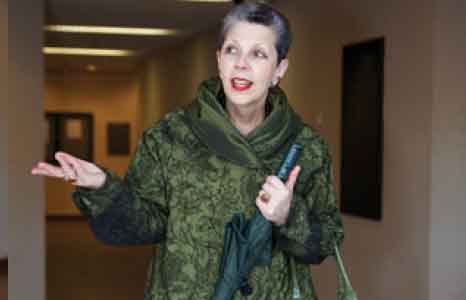Though Westchester County has its share of Greyhound rescue centers, none have ever seen a pup like England’s Jasmine.
As the story goes, Brit police found the beauty sick and abused 10 years ago and whisked her to the Nuneaton Warwickshire Wildlife Sanctuary for rehabilitation and release. What happened next simply stunned.
Jasmine became a mother – but it’s not what you may think. When new animals arrived at the sanctuary, Jasmine adopted them. She licked them welcome, grabbed them by the scruff and cuddled away their stress to health. Her “kids” weren’t even limited to canines that resembled her own litter but included foxes, badgers, rabbits, guinea pigs, chicks, an owl and a fawn. To her more than 50 brood, Jasmine was the perfect foster mum.
Some might deem Jasmine’s caretaking an instinctual act of maternal affection, but hers is far from the singular story of bonding between species. When a trend of online videos and emails telling tales of unlikely animal relationships hit the desk of Bill Murphy, series producer of THIRTEEN’s “Nature” series, he realized the friendly phenomenon is not likely new.
“It’s just becoming more and more exposed by virtue of the fact that people have small, inexpensive cameras in their homes,” he says. “All these different cross-species relationships are happening around the world and being documented by animal caretakers or owners.”
While stories swirling on the Internet inspire lots of warm fuzzies, Murphy and his team chose to one-up the collection of aww-inspiring videos with a broadcast exploring unexpected companions in the context of science.
“Animal Odd Couples” captures the stories of seemingly mismatched duos who – to humans – defy natural instincts. A cheetah, Kasi, and dog, Mtani, met as abandoned young pups. Adopted by Florida’s Busch Gardens, the zoo entered the pair in a pilot program to study their bond. They’ve been BFFs ever since. An over-protective male Brant goose has been long devoted to a 40-year-old female Aldabra tortoise, and Riley the coyote is cared for by what most would see as his natural predator, a most loving lion named Anthony three times Riley’s size. For 16 years, Jack the goat served as the eyes for his blind buddy, Charlie the horse, responsibly leading him daily to graze and making sure he was safe in storms. And like Jasmine the greyhound, Kate the Great Dane has become a surrogate mother for Pip the doe.
“It was the highest rated show of our full season. The response online was the most amazing, and we are still getting a response,” Murphy says of the program, which first aired in November. “Our clip of Pip and Kate was the highest viewed clip on the entire pbs.org website.”
Of course, such an abundance of adorable never fails to make captivating programming, but Murphy claims the public’s fascination with cross-species relationships delves much deeper than the cute factor.
“It’s the whole idea, which five or 10 years ago would have been considered taboo,” he says. “It’s the idea that animals can actually have similar emotions to humans, that animals might be able to feel compassion, love and compatibility, and the fact that animals from two different species could possibly form long-lasting relationships.” (Longer than many humans these days.)
Murphy’s goal exceeded simply documenting these enduring (and charming) bonds. He aimed to discover whether these animal emotions are a case of anthropomorphism or actually based in science. “Nature” enlisted noted animal behavior experts Marc Bekoff, professor emeritus of the University of Colorado, and Temple Grandin, professor of animal science at Colorado State University, who lent expertise affirming that animals aren’t much different than humans in experiencing a spectrum of relationship-building emotions. They choose whom to allow into social circles within and beyond their own kind and bond over commonalities like disposition and social structure. Besides, if a lion can take a liking to a human, why not any other species?
Primatologist Lauren Brent, who shares on the program her study of inter-species relationships among Caribbean rhesus macaques, asserts that friendship – a term just starting to be used in describing animals’ emotions – is even evolutionarily beneficial. Ladies, take a note from female monkeys: Those with tighter social connections display lower stress hormone levels, better coping skills and healthier offspring. (Though when it comes to our daily grooming, some of us may prefer to enlist a Ritz-Carlton masseuse over our next-door neighbor.)
Emotional cognition among animals regardless of species is a revolutionary theory for many in the scientific sphere – one that eventually may lead to an era of increased animal rights, says Murphy. (No promises, he says, but “Nature” has discussed covering the subject.) Still, the more you look at these animal relationships, the more they look human, and that strikes a chord with us people-folk.
“We share joy and happiness and pleasure and love and empathy and compassion and sadness,” Murphy says. “When we see emotions being shared by animals that look similar to the emotions that we go through, I think there’s a real ‘aha’ moment and a sense of bonding.”
Viewers also expressed a sense of gratitude to the program for validating what they already knew about little Fido or Fifi: Animals do love. There seems little other explanation why Jack the goat would so freely and fully care for his blind buddy Charlie until the horse’s last breath. (Keep the Kleenex handy.) Hard to ignore, too, are the lessons we humans can take from these purest friendships that thrive against the odds – and the ego.
“There is nothing in the relationship for Jack,” says Murphy. “He did it out of altruism. Jack just stepped up to the plate to take care of this horse. You see that sort of thing unfold on screen, and how could you not feel warm and cuddly and moved by it?”

